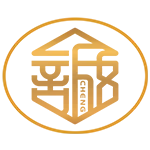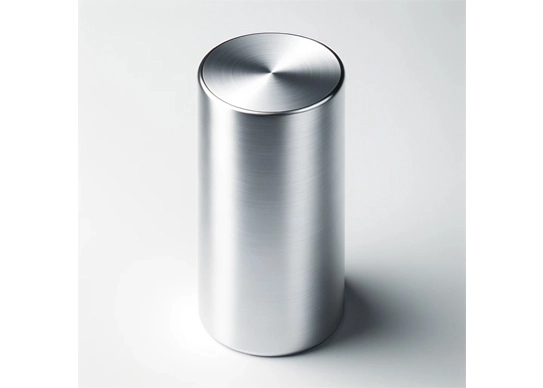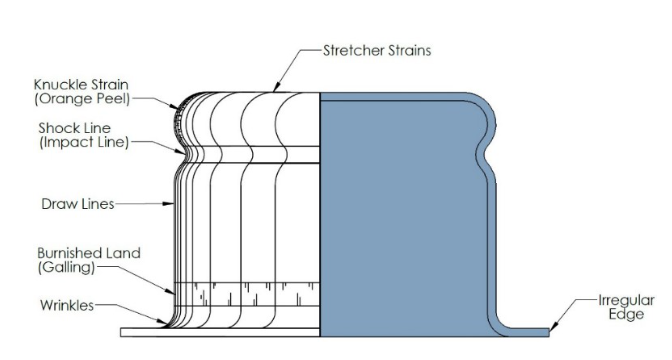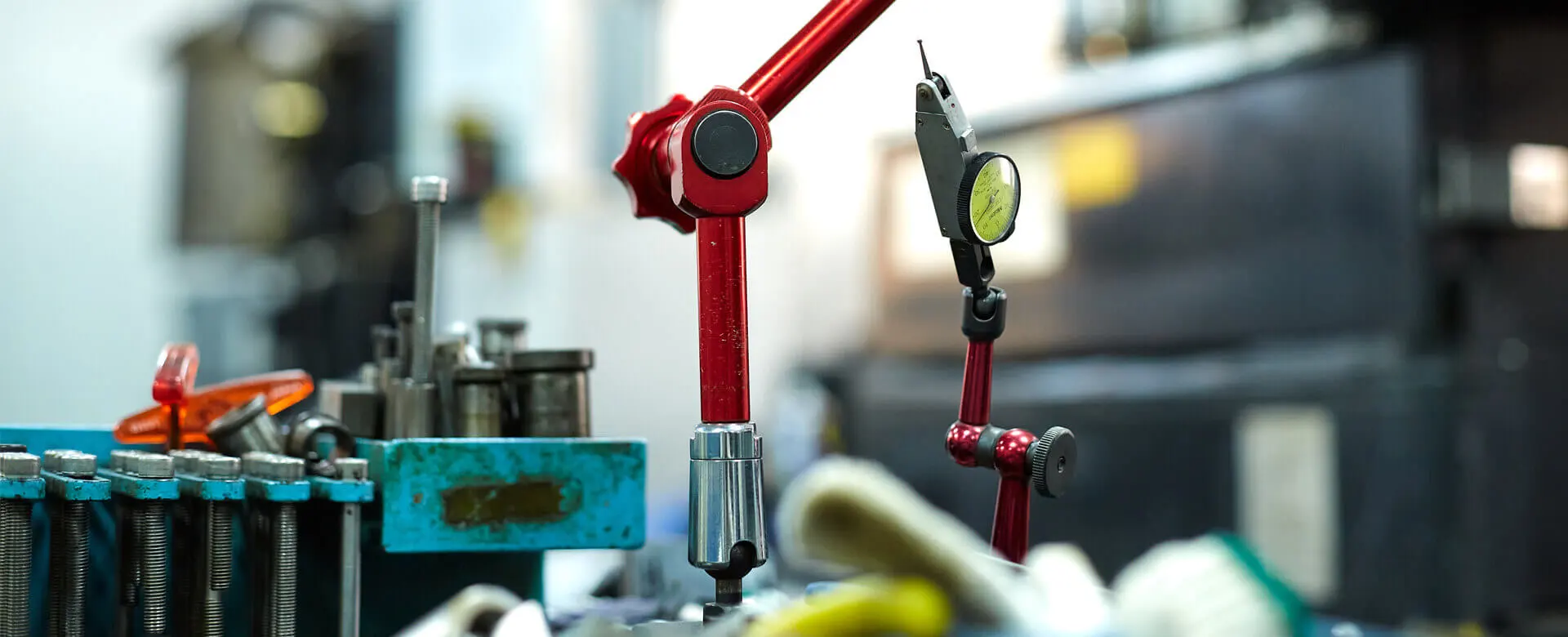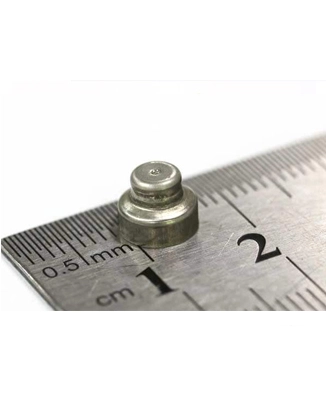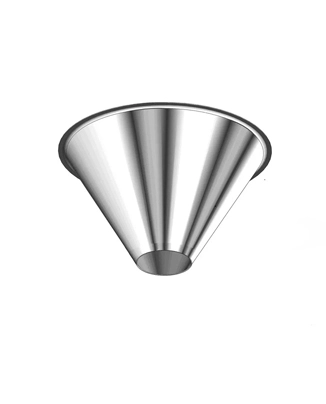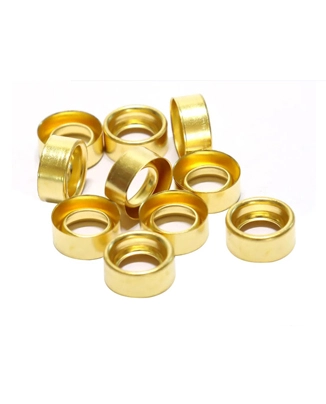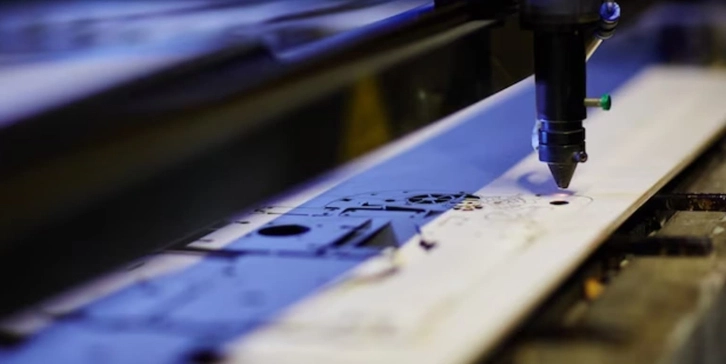The process parameters play a crucial role in achieving a successful deep drawing operation. Here are some key process parameters for cylindrical deep drawing:
Material Selection
To deep draw a product, it's very important to choose a sheet metal material with suitable properties for deep drawing like low yield strength and good ductility or maybe minimal spring back.
Sheet Metal Thickness
The thickness of the metal sheet is very important for the process as it can affect the drawing process. Usually thinner materials sheets require less force but they can be more prone to wrinkling.
Blank Diameter (D₀)
In the cylindrical deep drawing process the initial diameter of the blank metal sheet is very critical. It defines the final size, shape and how deep you can draw the cup.
Blank Holder Force
Proper application of blank holder force is essential. This helps to control material flow and prevent defects like wrinkling. This also ensures uniform thickness distribution.
Draw Ratio (DR)
In deep cylindrical drawing the ratio of the final cup diameter to the blank diameter is called the draw ratio.Its the most important factor in designing deep drawn parts. It influences the severity of deformation and the likelihood of defects.
Die Radius
It's another deep drawn design parameter that influences the process. The radius of the die opening affects the material flow. Smaller die radii generally lead to more severe drawing.
Punch Radius
The radius of the plunger that is in contact with and presses the sheet metal.This area defines the distribution of stresses onto the metal sheet during the drawing process.
Lubrication
Proper lubrication is crucial to reduce friction. Lubrication between the sheet metal and the plunder surfaces defines the drawn product quality. Proper lubrication prevents defects such as tearing and wrinkling.
Drawing Speed
Draw speed is the rate at which the plunger moves and forces the sheet metal into the die. Too slow or too fast speed will produce several defects in the product. Optimal drawing speeds prevent defects and ensure uniform material flow.
Temperature Control
Temperature is usually not the product but in some cases usually with hard material. Controlling the temperature of the sheet metal or the tools can influence the material's behavior. This is especially important for certain materials that exhibit temperature sensitive properties.
Die and Punch Materials
The selection of materials for the die and punch is essential for durability and minimizing wear during the deep drawing process.
Bolster and Press Stiffness
The stiffness of the press and its components, including the bolster, influences the overall stability of the deep drawing process.


Common defects in cylindrical deep drawing process
Cylindrical deep drawing process involves forcing metal sheets into a long cylindrical die. This creates defects in the products that are being drawn. Some of the common deep drawing defects are as follows.
Tearing
Tearing in deep drawing occurs when the metal sheet fractures and rips into two or more pieces during the deep drawing process.There are several causes of tearing in deep drawing including excessive material thinning, not proper lubrication, not proper blank holder force and excessive drawing speed.
Wrinkling
Deep drawing wrinkling usually is undesired folds and creases on the product surface.
It can be caused by factors like inconsistent material flow in the die, low blank holder force, less than required lubrication and improper die geometry.
Earing
Earing of the deep drawn product refers to the uneven stretching and thinning of the metal sheet. This leads to variations in thickness. Several factors can cause this earing like improper die design, material grain orientation and inadequate lubrication.
Surface Cracking
Surface cracking in a deep drawing process is the appearance of visible cracks on the surface of the drawn part. These defects can be due to excessive tensile stresses during process, material defects and improper die design.
Spring back
In the deep drawing process when a product after forming does not retain its shape and it tends to revert back to its original form partially, then this defect is called spring back. Factors that can cause these defects include material elastic recovery, inadequate and low blank holder force and insufficient draw depth control.
Thinning
Thinning of deep drawing products is the excessive reduction in material thickness during the process. This excessive reduction often leads to structural weakness. Several causes of this defect include inadequate blank holder force, improper lubrication and excessive drawing depth.
Die Marks
Die marks defect in deep drawing is the impressions and markings on the surface of the deep drawn part caused by the die. This defect can happen due to poor die surface finish, presence of foreign particles on the die surface and due to not proper maintenance of die.
Die Breakage
Die breakage in deep drawing is referred to as failure of the die during the drawing process. This can be caused by excessive loads, fatigue and inadequate die material.
Orange Peel
In this defect the surface of the deep drawn product resembles the texture of an orange peel. There are several causes of this defect including inconsistent material flow, improper die surface finish and inadequate lubrication.

Contact JCL for Your Deep Drawing of Cylindrical Sheet Metal Parts
At JCL, our dedication to delivering high quality products is unwavering. JCL implements international standardized quality control measures. This is done throughout the entire deep drawing process.
Our commitment guarantees that each product meets and exceeds all international and industrial standards. We work hard to provide our clients with confidence in the reliability and excellence of our output.
Choose JCL for your cylindrical deep drawing needs, and experience a partnership that goes beyond manufacturing.

